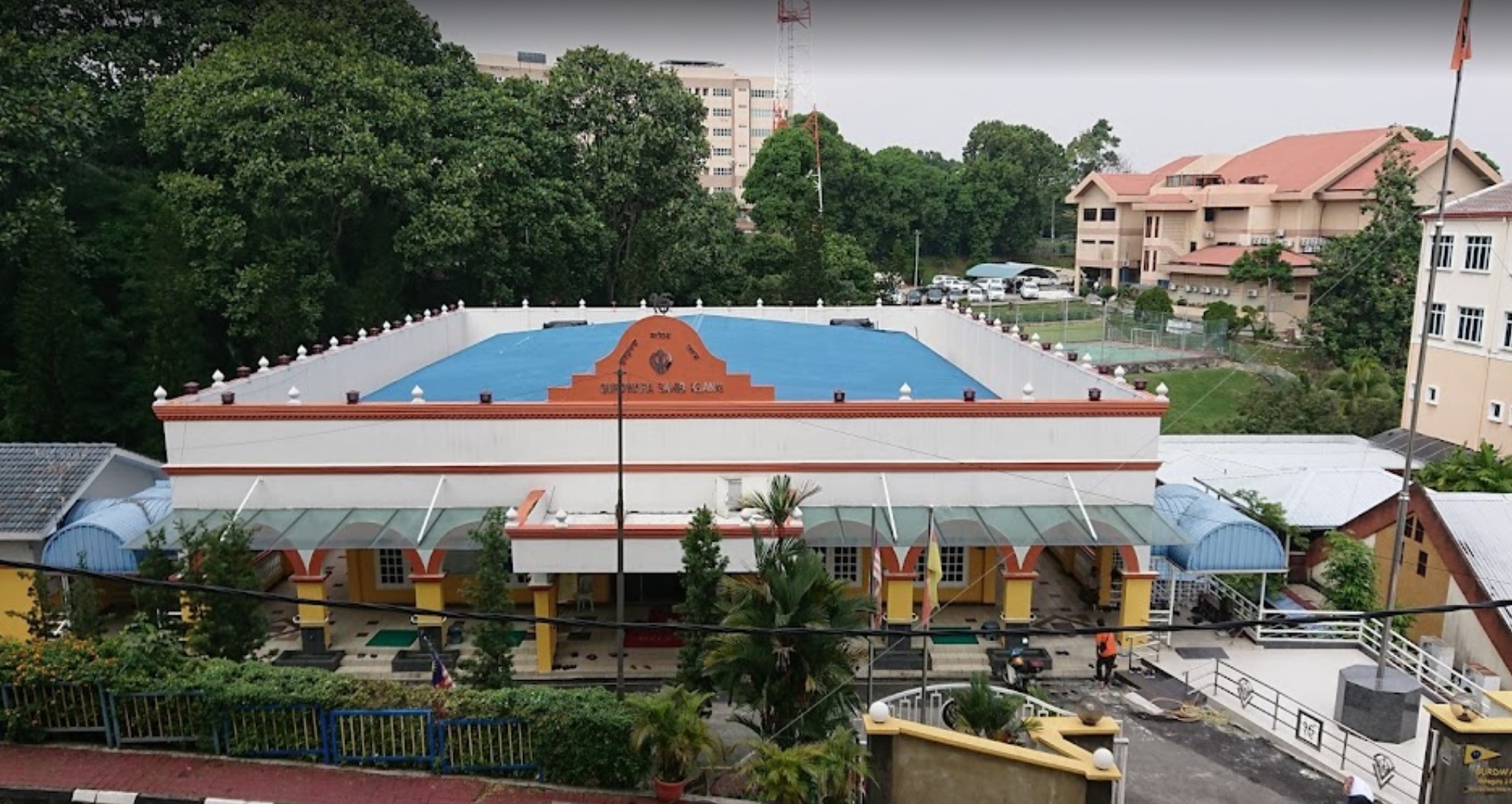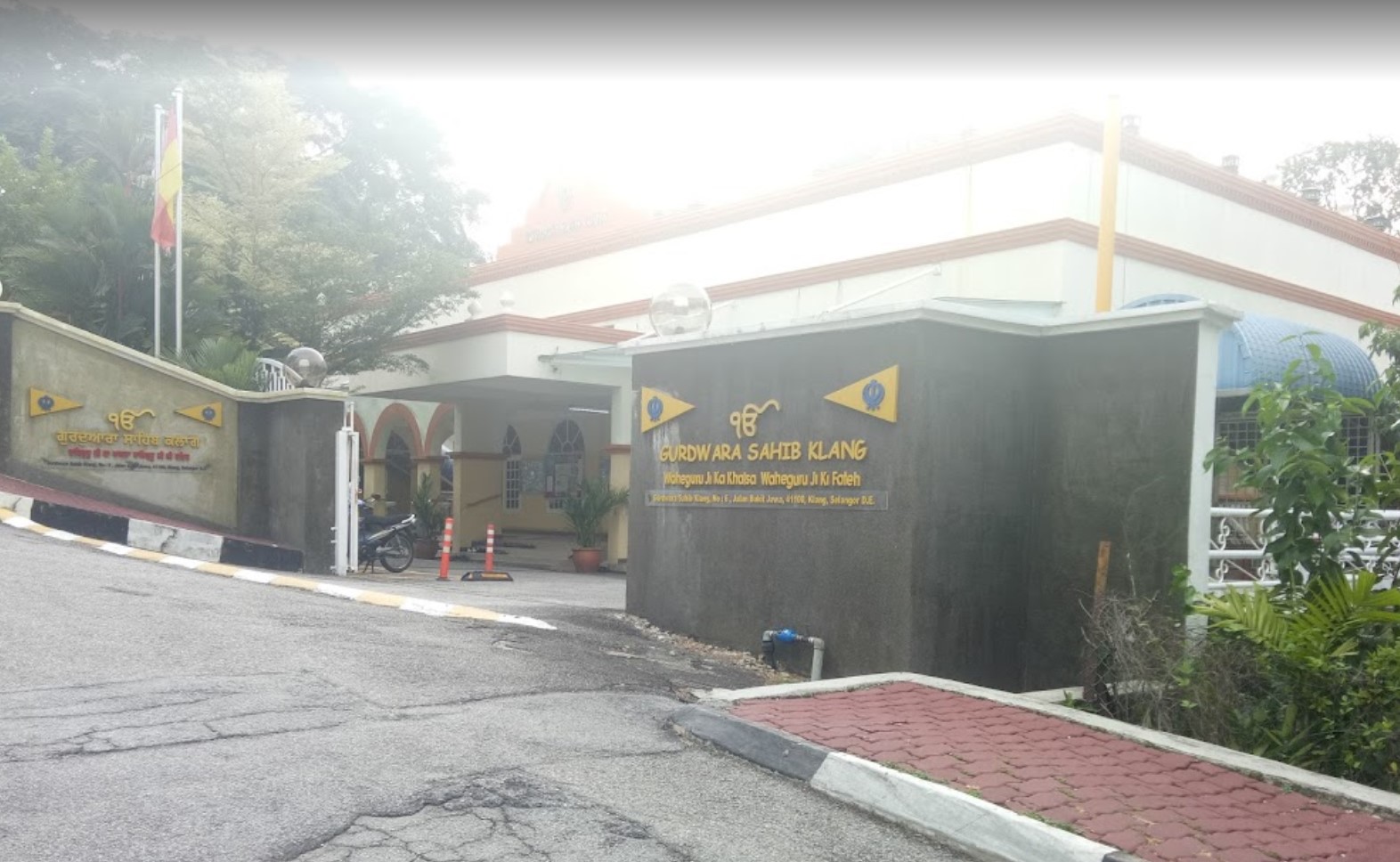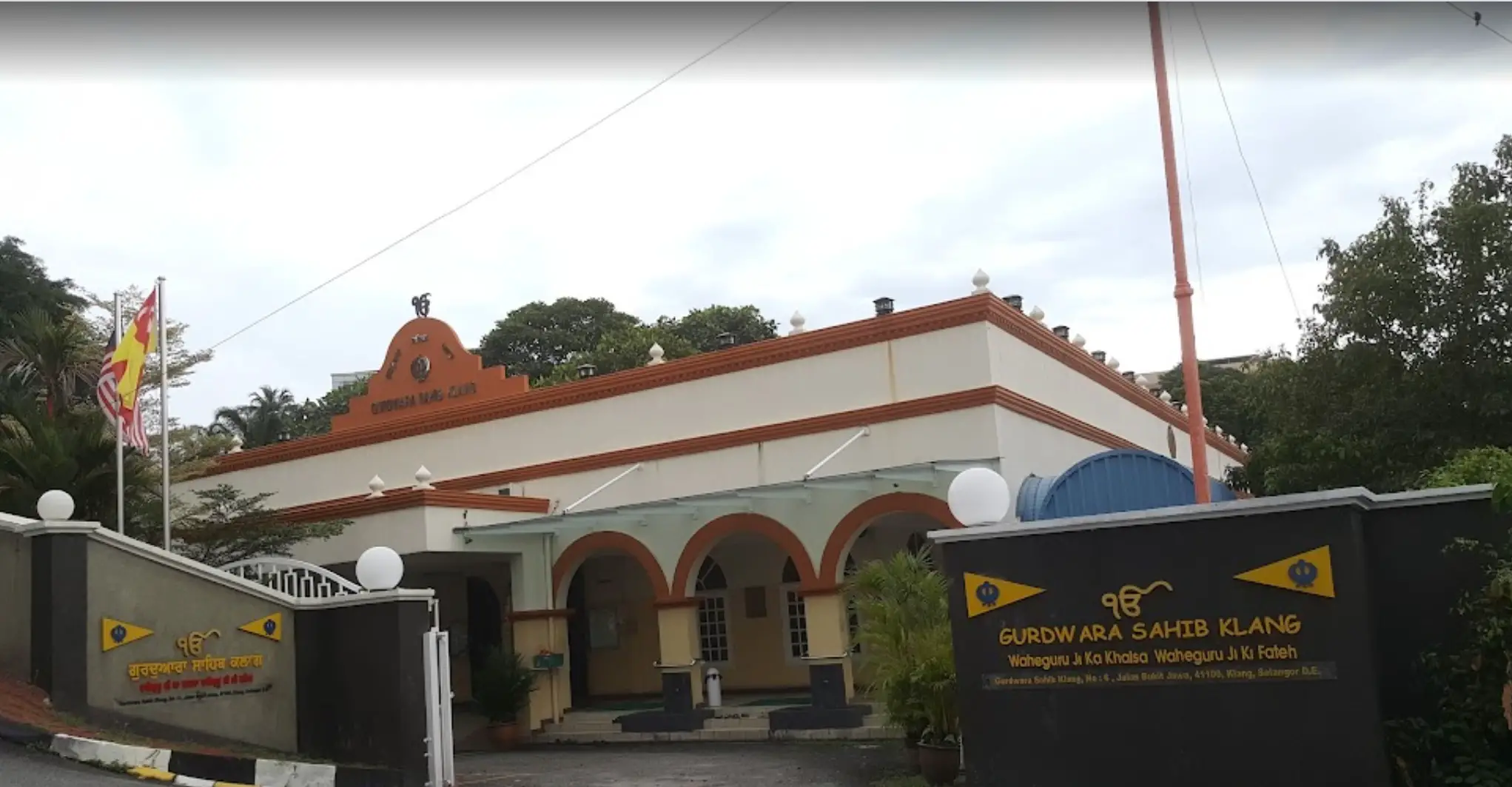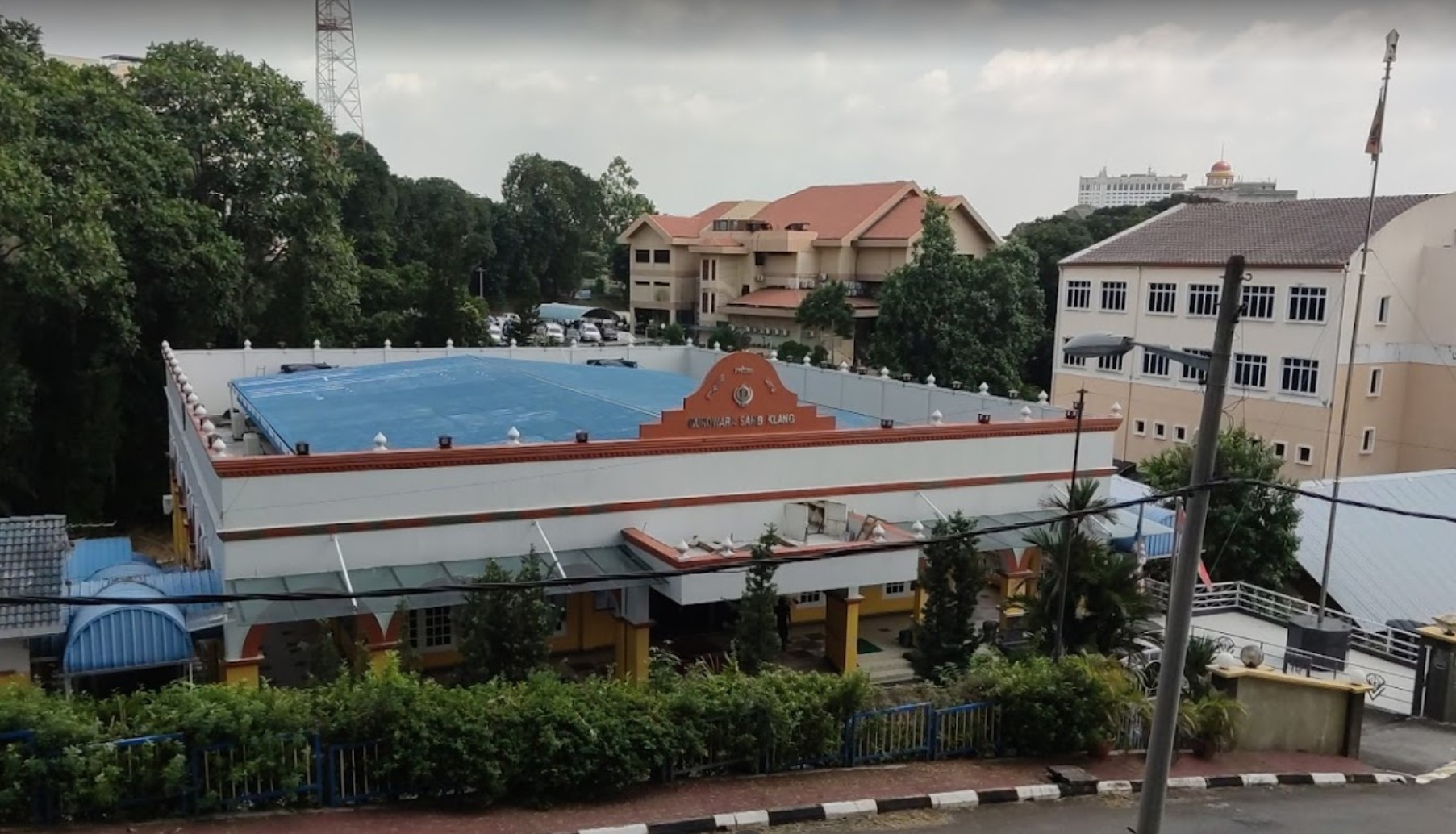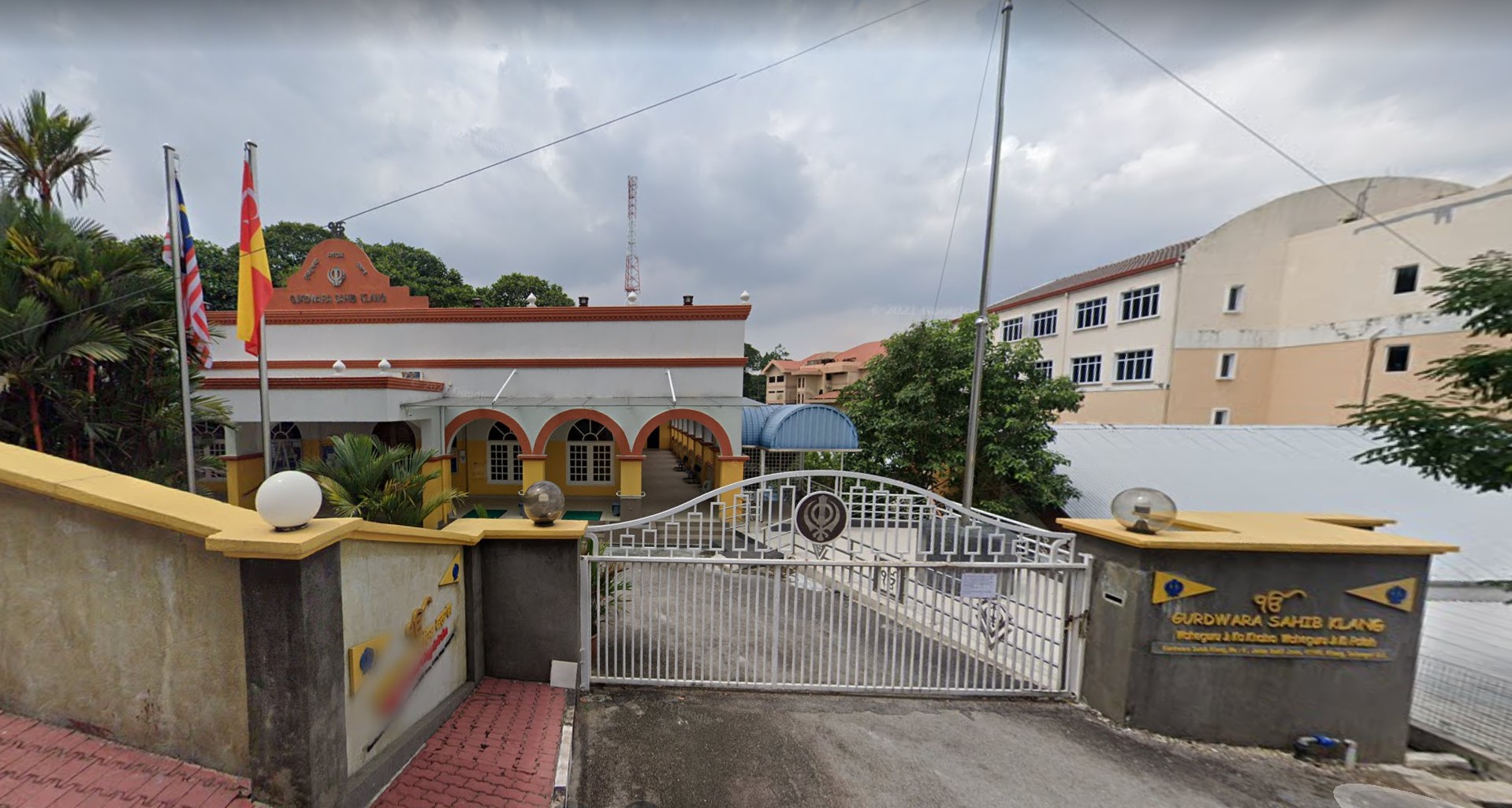Gurudwara Sahib Klang, Selangor
By the late 19″ Century Kiang town was an important commercial trading center. Many Sikhs were employed in the Federated Malay States Police to maintain law and order. Gradually, more Sikhs arrived in Kiang and became watchmen, money lenders, dairy farmers and bullock cart operators and drivers.
In 1900, there were aboute 50 Sikh in Kiang. They built their first Gurdwara Sahib on a piece of land about 500 square feet in size. The first Gurdwara Sahib building was a wooden structure with an attap roof. Its address was No. 38 Jalan Raya Barat, 41100 Kiang. This Gurdwara Sahib land was formally gazetted as a Sikh Temple Reserve in 1931.
Some of the Sikhs in Kiang who played an important role in the early 20″ Century were Subedar Harnam Singh, Sardar Thakar Singh Baba Bakala, Sardar Wariyam Singh Himatpura, Sardar Sher Singh Bheni Jessa, Sardar Chanan Singh, Sardar Dhan Singh Pato, Sardar Gurbax Singh Sangatpura, Sardar Inder Singh Mari, Lambardar Ram Singh, Sardar Jhang Singh J. P. and Sardar Bhoot Singh Thardeo.
By 1930, there were about 200 Sikhs living in and around Kiang and the Gurdwara Sahib was inadequate to seat the ever-growing sangat. In 1933 / 1934, a double storey wooden building with a tiled roof was built on the site of the original Gurdwara Sahib. The land area was expanded to 1,200 square feet. In 1972, the land area was further expanded by another 600 feet. The Gurdwara building was then repaired and renovated.
By 1985, the Sikhs residing in Klang, Kapar, Meru, Kuala Selangor and Banting, who by this time numbered about 1,200 people, were attending religious functions in the Kiang Gurdwara Sahib. Therefore, the need for bigger premises arose, but there was no land available to expand the Gurdwara Sahib.
In August 1989, the Government offered the Sikh community of Klang a new site about an acre in size, Lot Number 970, which is the location of the present Gurdwara Sahib.
The new Kiang Gurdwara Sahib is a two and a half storey brick building. Construction of the building started in November 1993 and was completed by the end of 1995 during the Presidency of Sardar Mejar Singh. The cost of the building was nearly RM2,000,000.00 out of which RM 100,000.00 was donated by the Prime Minister’s Department. Donations were received from the Sikh Sangat from all over Malaysia to complete this project.
The top floor comprises of the Darbar Sahib, which can seat about 1,000 people. The ground floor consists of the langgar (dining) hall, the kitchen, office, library, visitors’ rooms and classrooms for holding Punjabi classes. The Granthi’s quarters are located in a separate building adjacent to the Darbar Sahib.
The new Gurdwara Sahib was officially opened open by the sangat on 17″ February 1996. The Sikh Holy Book, Sri Guru Granth Sahib Ji, was respectfully taken in a procession from the previous Gurdwara Sahib in Jalan Raya Barat to its new location in Jalan Bukit Jawa. The Dasmesh Band headed by Sardar SukhDev Singh led the procession. Akhand Path prayers were heldon the following day.
There are presently about 300 Sikh families who participate in the religious activities in this Gurdwara Sahib. There are about 250 students who attend Punjabi classes once a week on Saturday afternoons. The Management Committee comprises of the President, Secretary, Treasurer, their assistants and five committee members.
There is a Sikh Assistant Registrar of Marriages in this Gurdwara Sahib who officiates at Sikh marriages when called upon to do so. The actual marriage ceremony is conducted by the Granthi in accordance with Sikh rites.
Prayers are held on Friday evenings from 7.00p.m. to 9.00p.m. and Sunday mornings from 6.00a.m. to 8.00a.m. Sikh Naujawan programmes are held on Fridays from 7.00p.m. to 9.00p.m.
The author is grateful to Sardar Atma Singh s/o late Sardar Sher Singh Dhaliwal, Village Bheni Jassa and Sardar Harchand Singh, the current President, who provided some of the early information on the Gurdwara Sahib Klang.
Courtesy:
Sikh Gurudwaras in Malaysia&Singapore
Saran Singh Sidhu AMN,PNM,FRNS
